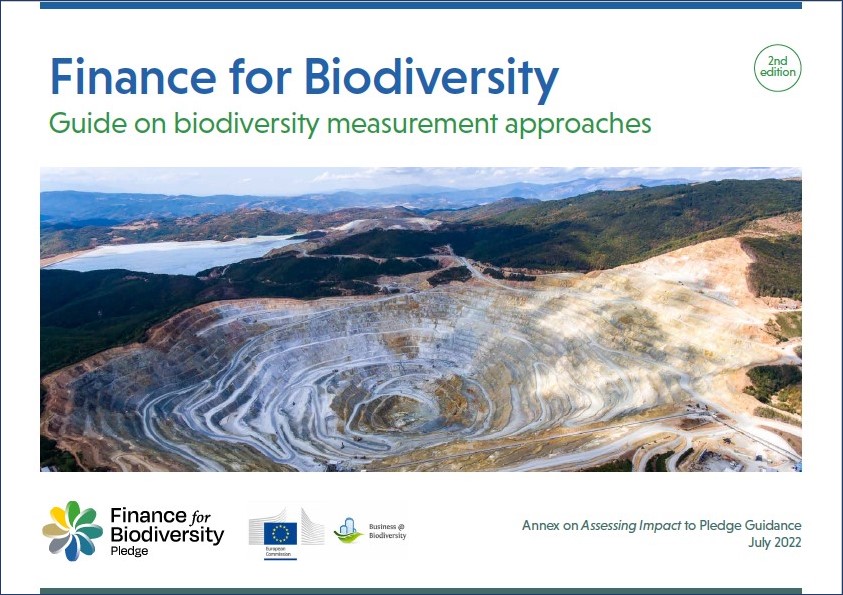Second edition of Guide on measurement approaches released
15 July 2022 – The second edition of the ‘Guide on biodiversity measurement approaches’ is now online. It provides a comprehensive overview of seven tools currently in use by financial institutions to measure the biodiversity impact of their activities. The renewed Guide now also includes dedicated chapters on biodiversity data and on measuring marine biodiversity. The maturity levels of the measurement approaches in this Guide will be updated quarterly.
The second edition of the Guide on biodiversity measurement approaches was presented earlier this week during the webinar ‘How to measure biodiversity impact?’. This renewed edition builds on the first edition, which was launched during a webinar in April 2021 and received much positive feedback. The Guide is made by the Finance and Biodiversity Community (F@B Community), part of the EU Business@Biodiversity Platform, and the Finance for Biodiversity Foundation. Its aim is to help financial institutions to find a measurement approach that fits their needs.
Download the second edition of the Guide on biodiversity measurement approaches
Guide with an overview of seven biodiversity tools
The Guide provides a comprehensive overview of seven tools for measuring biodiversity currently in use by financial institutions: BFFI, BIA-GBS, CBF, GBSFI, GID, ENCORE and IBAT. It highlights which tools might be the most suitable for specific organizational focus areas, business applications and asset categories and shows the strengths and weaknesses of each. The Guide also details the data and resource requirements for each tool and gives insights on what scopes and pressures are covered.
New in the second edition
The update of the Guide on measurement approaches has been shaped by the needs of financial institutions. A consulting workshop with members of the F@B Community and the FfB Foundation in April has led to the following new elements in the second edition:
- Two tools added: GID and IBAT
- More detail on what biodiversity pressures each tool covers
- Examples of visual output per tool
- A section for each tool describing what other tools it can be combined with
- Best practices and case studies, provided by financial institutions
- New chapter on data types, innovations and sources
- Chapter on the emerging developments related to measuring marine biodiversity
- Latest insights on key next steps based on close collaboration with experts from tool developers and financial institutions
- Expert review by Annelisa Grigg, director of Globalbalance
Measuring biodiversity impact is an important step for financial institutions
As biodiversity loss becomes an ever more urgent challenge, financial institutions are looking for ways to quantify the impacts and dependencies of their finance and investment activities on biodiversity. Therefore, assessing impact is one of the five commitments of the Finance for Biodiversity Pledge. This Guide serves as an annex to the Assessing Impact section of the Pledge’s main Guidance Document.
Guide builds on several sources
The format of the Guide on biodiversity measurement approaches builds on the series of reports entitled Assessment of biodiversity measurement approaches, developed by the Methods Workstream of the EU Business@Biodiversity Platform, and compiles the information that is most relevant to financial institutions. The recent Thematic report on biodiversity data by the same workstream informed the new chapter ‘Biodiversity data, types and sources’ in this second edition. For the details about the measurement approaches themselves, the Guide draws heavily on input by the respective tool developers and is furthermore informed by the expert review. The new chapter on ‘Measuring marine biodiversity’ was written by guest authors François Gardin, Senior Advisor to the Green Digital Finance Alliance and closely involved with the ‘Making Oceans count’ project.
Download the Guide on biodiversity measurement approaches
Find the recordings and slides from the webinar in which the second edition of the Guide was launched (registration to BrightTALK required).
